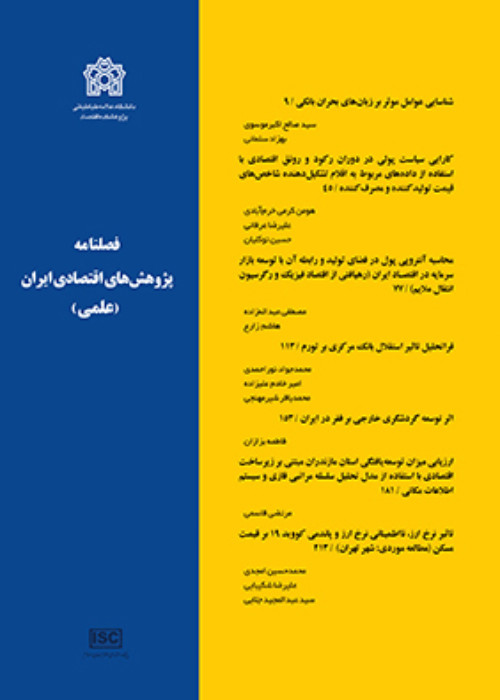Measuring the Carbon Footprint of Urban and Rural Household Deciles in Iran: The Social Accounting Matrix (SAM) Approach
Author(s):
Abstract:
Considering its biological situation, each country has a specific carrying capacities to absorb pollutants. Increased production, population, and direct and indirect fossil energy consumption have increased emissions such as carbon dioxide, resulting in destructive effects on the environment such as imbalanced greenhouse gases, global warming, climate changes, and endangering of humans and other creatures lives. The extent and dimension of the mentioned effects can vary depending on the consumption modus and technique practiced by households and industries. Ecological carbon footprint is a criterion to measure the humans impact on carbon emissions. In an attempt to measure the carbon footprint of households, this research seeks to answer the following questions: How much is the carbon footprint of urban and rural household deciles? What deciles create higher carbon footprints? What is the share of households in the countrys total carbon footprint? How big is the carbon footprint per capita in each decile? For this purpose, the Social Accounting Matrix of the year 2011 is used. The empirical results indicate that in 2011, the total net direct and indirect carbon footprint in Iran was 517 million tons, in which the household consumption accounts for 64% and the remaining 36% belongs to the governments final consumption, export and others. Moreover, carbon footprint of urban households is more than the rural ones and it is elevated in higher income deciles. Carbon footprint of the tenth urban decile is 11 times greater than the first one. For rural deciles, this ratio is 9. Furthermore, carbon footprint of the tenth urban decile is 4 times greater than that of the tenth rural one. An Iranians household carbon footprint per capita was found to be about 4429 kg in 2012. Carbon foot print per capita in the first urban decile, the tenth urban decile, first rural decile, and the tenth rural decile is 1,124, 17,134, 965 and 9,803 kg, respectively. The results indicate that people with higher incomes have a greater carbon footprint.
Keywords:
Language:
Persian
Published:
Iranian Journal of Economic Research, Volume:21 Issue: 68, 2016
Pages:
163 to 206
magiran.com/p1744458
دانلود و مطالعه متن این مقاله با یکی از روشهای زیر امکان پذیر است:
اشتراک شخصی
با عضویت و پرداخت آنلاین حق اشتراک یکساله به مبلغ 1,390,000ريال میتوانید 70 عنوان مطلب دانلود کنید!
اشتراک سازمانی
به کتابخانه دانشگاه یا محل کار خود پیشنهاد کنید تا اشتراک سازمانی این پایگاه را برای دسترسی نامحدود همه کاربران به متن مطالب تهیه نمایند!
توجه!
- حق عضویت دریافتی صرف حمایت از نشریات عضو و نگهداری، تکمیل و توسعه مگیران میشود.
- پرداخت حق اشتراک و دانلود مقالات اجازه بازنشر آن در سایر رسانههای چاپی و دیجیتال را به کاربر نمیدهد.
In order to view content subscription is required
Personal subscription
Subscribe magiran.com for 70 € euros via PayPal and download 70 articles during a year.
Organization subscription
Please contact us to subscribe your university or library for unlimited access!


